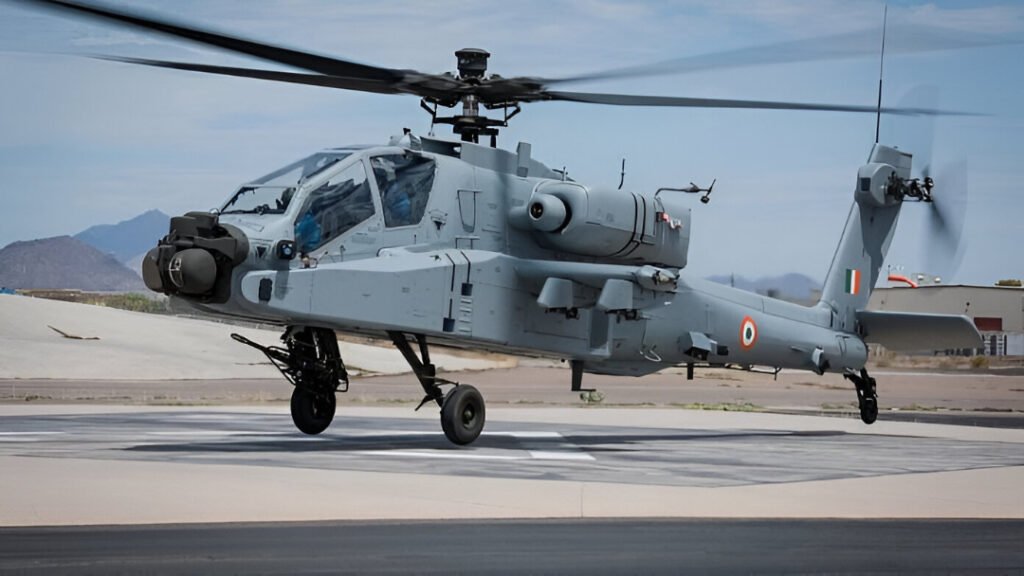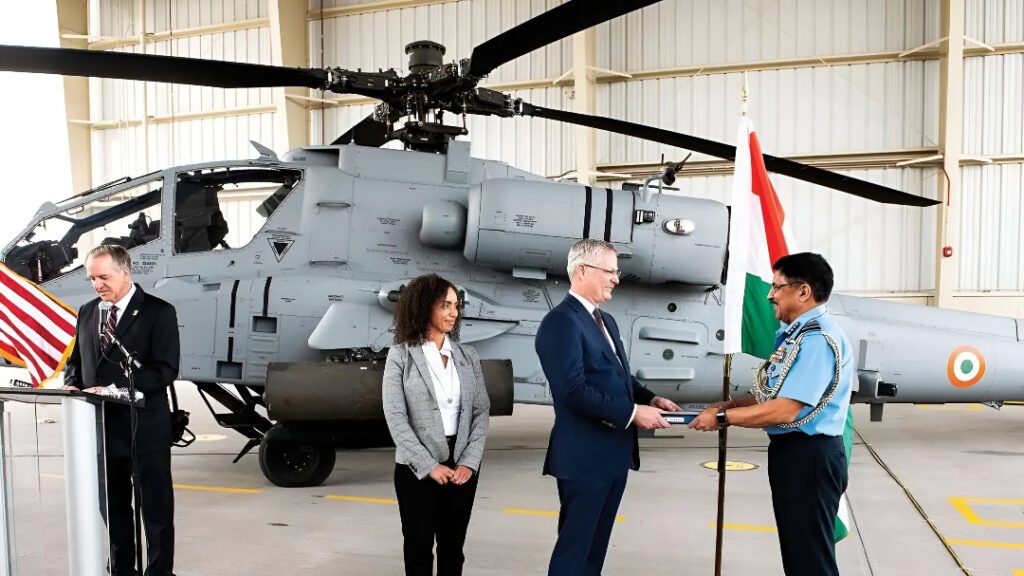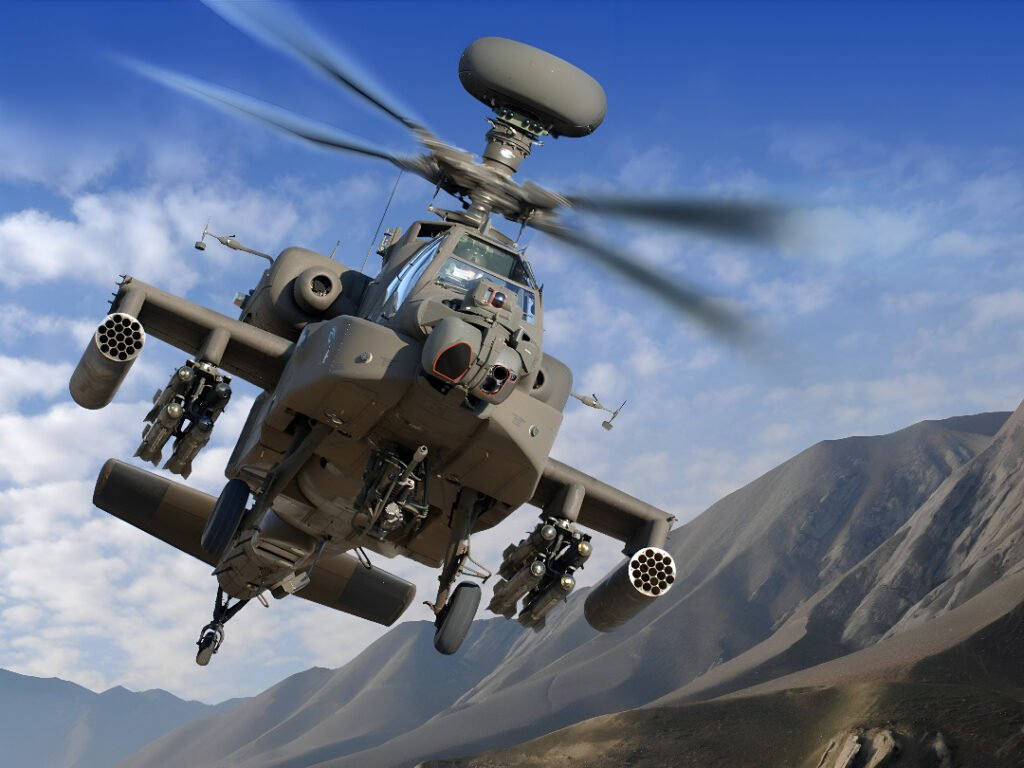
Introduction: Enhancing Capabilities along the Western Border for the Indian Army
India is set to receive its initial shipment of three AH-64E Apache attack helicopters from the United States on July 21, 2025, significantly enhancing the Indian Army’s border surveillance and engagement capabilities along the volatile Pakistan frontier. This is the first step in a plan to modernize India’s military hardware and increase India’s geopolitical responsiveness with shifts in international relations. The Apaches will be stationed at Jodhpur in Rajasthan, a base that is advantageous for western frontier operations. In this article, I outline the details of the acquisition and the capabilities of the AH-64E, along with comparing fleet strengths of India, Pakistan, and the U.S. Moreover, I will discuss the integration of these new assets into India’s defense ecosystem, including contrasts with the domestically produced light combat helicopter Prachand.
The Delivery Schedule and Deployment Plan
The long-anticipated arrival of AH-64E Apaches, alongside the rest of the Apaches on July 21, 2025, will be delivered to Hindon Air Force Station. The delivery has now been scheduled for mid-2025, as shifting global supply chains, changing geopolitical dynamics, and intracountry relations exacerbated the delays. The expiration of the postponed synergistic shifts with global trade patterns and geopolitical relations will catalyze India’s aspirations towards military and aviation self-sufficiency. The delay has, however, strained the IAF Apache squadron that was formed over a year ago, as there are no operational aircraft to utilize until the above date. The deployment along the Pakistan border is a reaction to the increasing tension and troop deployment in the region, especially with efforts under Operation Sindoor. The last three out of six ordered helicopters should arrive by the end of 2025.
Price and Acquisition Details of Apache Helicopter

India’s acquisition of the Apaches stems from a $600 million agreement struck in 2020 handing out six AH-64E helicopters made during Trump’s visit to India. Therefore, the Apache helicopter price per unit is around $100 million, which, of course, includes training, support, and weapon systems. This came alongside an earlier 2015 agreement with the US and Boeing for 22 Apaches, which were delivered to the Indian Air Force by 2020. The new helicopters are issued to the Army, which signals a move towards better integrated combat capabilities of the ground forces.
How many Apache helicopters does India have?
With the upcoming deliveries, the number of Apache helicopters India has will be updated to 28 operational units. Two dozen will be held by the IAF in Pathankot and Jorhat, while six will be stationed with the Army Aviation Corps in Jodhpur. India became one of the largest operators of the AH-64E Apache in the region. The integration of the Apaches into IAF service demonstrates their operational effectiveness in varied combat environments, which in turn signifies the further evolution of the joint warfare doctrine with the Army’s Apache induction.
Capabilities and Combat Edge of AH-64E Apache
The Apache helicopter AH-64E, dubbed Apache Guardian, is expected to last till the 2060s and has been purposely built as the most advanced version in the Apache family. It has advanced communication and targeting systems with night vision capabilities, allowing precision strikes 24/7. The AH-64E is equipped with Hellfire anti-tank missiles, Hydra rockets, Stinger air-to-air missiles, and a 30 mm chain gun. This makes it useful for countering armor, supporting troops, and reconnaissance missions. With sensors, the Apache can electronically counter-warfare and use network-centric warfare to integrate into India’s multi-domain battlefield.

Comparative Fleet Strengths: India, Pakistan, and the U.S.
- Pakistan currently operates a few older models of AH-1 Cobra attack helicopters. There has been talk about acquiring the Turkish T129 ATAK helicopter, but as it stands, Pakistan does not have any Apaches in its fleet. This increases the advantage of India over Pakistan in terms of both quality and quantity of attack helicopters along the western border.
- How many Apache helicopters does the U.S. have? With more than 1280 units in active service worldwide, the U.S. Army operates over 800 AH-64 Apaches, making it the backbone of American attack aviation.
- How many Chinook helicopters does India have? India holds 15 strategically important CH-47F Chinook heavy-lift helicopters, purchased from the U.S. for improved strategic airlift and disaster response. While these serve a different purpose than the Apache, they are vital for swift movement of troops and equipment.
Local substitutes: LCH Prachand
Alongside dominating the heavy attack helicopter segment, the Apache’s competitors also include the Prachand helicopter, also known as the Light Combat Helicopter (LCH), which is designed for high-altitude operations in the Himalayas. The LCH’s agility complements the Apache’s bulk; thus, they can be combined to form a dual-layered attack helicopter fleet, further strengthening the operational impact of the Indian Air Force and Army.

Strategic Implications and Future Prospects
The acquisition of the AH-64E Apaches gives new capabilities to India for conducting precision strikes, reconnaissance, and electronic warfare along the border with Pakistan. Their use strengthens India’s resolve to defend its technological advantage in a geopolitically volatile area. Looking forward, India will want to buy more Apaches or undertake more indigenous initiatives to match changing threat landscapes. In future warfare, their integration with drones and satellite reconnaissance will make conflicts more efficient and effective.
Conclusion: A New Chapter in India’s Military Modernization
In the context of the July 21, 2025, date of India’s acquiring the first three helicopters from the US. With recent purchases of drones, India stands ready to further modernize its forces. There is an emerging expectation about India’s spending on defense. Thus, the military modernization will enhance the military deterrence posture against Pakistan.











